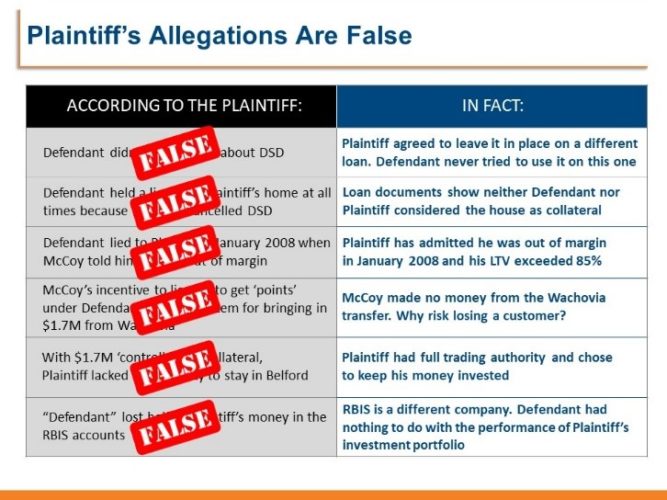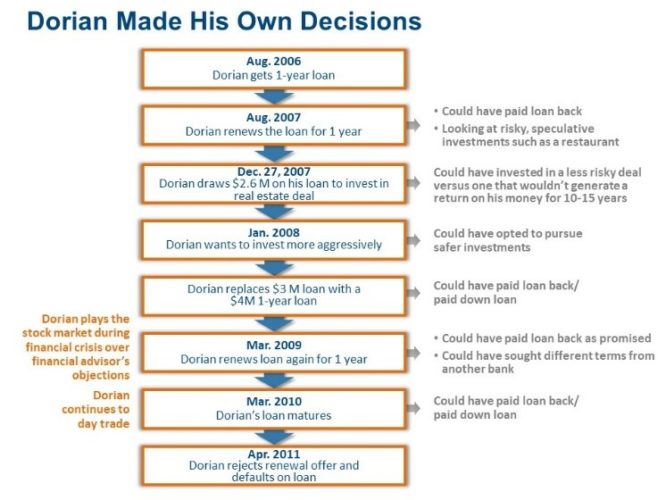Visual Path to Verdict: Building Persuasive Litigation Graphics Part 3 of 3: Effective Use of Legal Graphics
in Closing Arguments and
Their Impact on Deliberations to Verdict

At this stage of trial, you have already presented your key themes and begun using legal graphics during your opening statement and expert witness testimony. The hope is that the jurors found your opening to be persuasive and your witnesses to be credible. By the time you reach closing arguments, many jurors are already leaning toward one side. At this stage, it is critical to arm those jurors with the visuals that they will need in deliberations to fight for your client and reach a verdict in their favor. Let’s take a look at how to effectively use legal graphics in closing arguments.
Preparing for Closing
Closings should not be a mere recap of what jurors have already heard. And, it is risky to assume they’ve remembered all the key evidence presented throughout the trial. It is important to reintroduce your roadmap that you showed in your opening statement. Use visuals to reinforce the story you want jurors to remember. One effective approach is to use visual anchors during trial to help jurors retain the information days or even weeks later in deliberations. In this example, we used a bold arrow to convey the range of investments from low risk to high risk. The jury could quickly grasp the takeaway - that of all the investment options, the plaintiff chose those with higher risk/higher reward. The jurors may have forgotten the details, but they will remember the vibrant orange to red arrow on the risk/reward spectrum.

Another powerful tactic to use in closing is to recall the “corrected” slides created from the opposing side’s legal graphics. During your experts’ testimony, it is highly effective to take graphics shown by the other side and demonstrate how the information is missing or misleading. For example, in a series of builds, insert what data was omitted or show how the scale of a bar chart was skewed. In a personal injury case, the plaintiff claimed the car accident caused his mental issues and alcohol problems. A timeline with an accurate plotting of his medical records revealed the mental health problems and struggles with alcohol preceded the accident by a year. Use these types of graphics again in closing to cast doubt on the other side’s arguments right before deliberations.
Most trials require jurors to sit through hours and hours of testimony by multiple fact and expert witnesses. When you reach closing arguments, refresh jurors’ memories of the key witness testimony by creating a chart with their photo (for ease of recall) and a truncated synopsis of their findings.
Anticipate challenges jurors will face in deliberations by walking through a list of the other side’s key points and providing a counterpoint, showing why each point is inaccurate or false. In addition, highlight any inconsistencies in the plaintiff’s story. This will cause jurors to question plaintiff’s version of events. These approaches provide jurors with a way to process the days of testimony and evidence in a concise summary.

Jurors often look for common ground. “Jurors actively build stories based on the material presented at trial and then fill the gaps in the narrative with their own personal experience and knowledge.”[1] For example, an individual was suing a large bank for claims related to an improper foreclosure resulting in the loss of valuable property. While the jurors could sympathize with someone who had lost their home and may have even known someone whose home was foreclosed, they were also convinced that the bank had taken reasonable measures to work with the plaintiffs. A checklist was created to focus on how the bank acted properly and within guidelines. This helped jurors feel that they were doing the right thing when they ultimately sided with the defense.
Directly placing blame on a party for their situation can offend some jurors. A more effective approach would be, in your closing argument, to create a visual showing the series of choices the individual made that led to their circumstances. For example, a decision tree can walk jurors through a series of decisions that the individual made step-by-step (building on separate mouse clicks) and convey the alternative paths he/she could have taken to avoid the outcome.
In post-trial interviews with jurors following the Arthur Andersen trial in 2002, jurors recounted that they had “spent the next few days poring over the voluminous documents in the case. One juror…created visual aids to help himself and others evaluate the case.” [2] By the time you reach closing arguments, it is imperative that you have verified each theme in your story and addressed every claim. Reinforce those themes with visuals that jurors will remember and pull from in deliberations. The risk of not doing so results in jurors filling in the blanks themselves and creating a narrative that could be unfavorable to your client.

Ultimately, the goal is to give jurors a reason to feel good about finding for your client. Legal graphics play an important role in achieving this outcome during all phases of litigation. Give proper attention to developing the legal graphics that will punctuate your strongest points. Properly armed, the jurors will be able to articulate your side and hopefully reach a favorable verdict.
The DecisionQuest legal graphics team has produced 6,000,000 legal graphics (and counting). To discuss your upcoming case and how we can help build a visual strategy and help you gain a winning edge, contact hello@decisionquest.com.
About the Author:
Gayle Mumm Rossi is a Vice President in the New York Graphics office of DecisionQuest with a strong following of clients in the financial sectors. Ms. Rossi translates complex information into simple and compelling visuals. With over 25 years of experience, she has been involved in hundreds of cases, including securities, white collar, auditor liability, contract, securities, intellectual property, product liability and other complex civil disputes. Her responsibilities range from working with the trial team to develop strategic concepts for demonstrative evidence to overseeing the creative development and production of the exhibits.
Ms. Rossi has worked closely with hundreds of experts on their visual aids to ensure their testimony is clear to the decision-maker. She focuses on the key takeaway of every graphic to ensure the visuals are conveying the evidence in the most persuasive way to judges, jurors, arbitrators, mediators and other triers-of-fact in venues across the country.
[1] Nancy Pennington, Reid Hastie, “Explaining the Evidence: Tests of the Story Model for Juror Decision Making,” Journal of Personality and Social Psychology (1992
[2] Twelve Frustrated Jurors,” Miriam Rozen and Brenda Sapino Jeffreys, Texas Lawyer (July 3, 2002)

